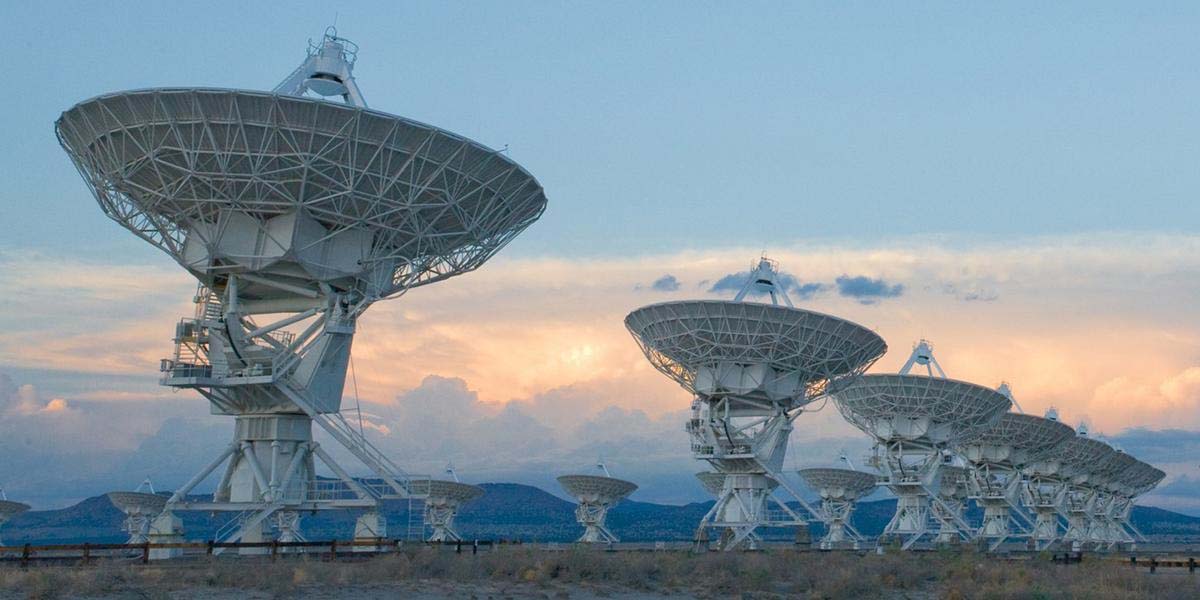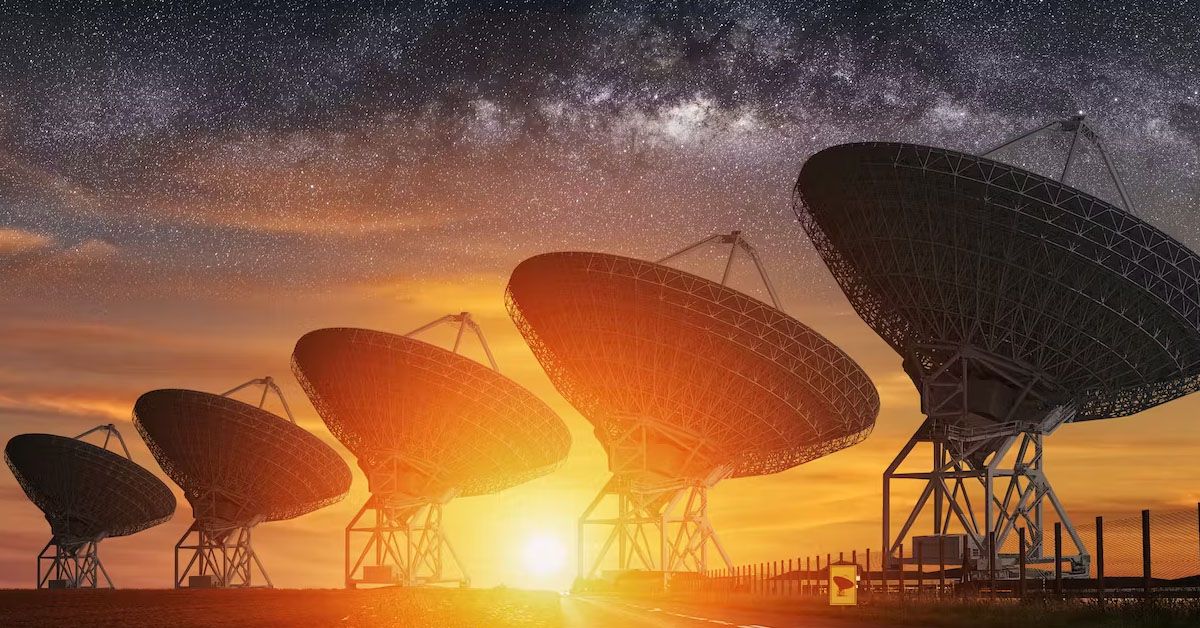Ever looked up at the celestial expanse dotted with myriad stars and pondered if ours is the only sentient species in this enormous universe?
Such fascinating questions fuel a revolutionary astronomical endeavor, the Breakthrough Listen Investigation for Periodic Spectral Signals (BLIPSS). Under the tenacious leadership of Akshay Suresh, a doctoral candidate from Cornell University, this project brings a novel perspective to the perpetual quest for extraterrestrial intelligence (SETI) in our infinite and enigmatic galaxy.
Guided by the prestigious SETI Institute and Breakthrough Listen, the team behind BLIPSS is utilizing innovative software, the Fast Folding Algorithm (FFA), to scan the galactic horizon. Their focus? The densely packed central region of the Milky Way, a swirling mass of stars and potentially habitable exoplanets that may be signaling their existence through periodic pulses.
As we embark on this journey to unearth the hidden messages from the cosmos, we must ask: Are we on the verge of detecting otherworldly conversations?
Breakthrough Listen Investigation for Periodic Spectral Signals (BLIPSS)
Akshay Suresh, a committed doctoral student from Cornell University, is the driving force behind the ambitious BLIPSS project. Working tirelessly to decode the mysterious sounds of the cosmos, Suresh leads a multidisciplinary team that brings together some of the brightest minds in the field. This unique team is formed through a synergy between three remarkable institutions: Cornell University, SETI Institute, and Breakthrough Listen.
Providing invaluable guidance to the team is Dr. Vishal Gajjar from the SETI Institute. His wealth of knowledge and expertise in the field of extraterrestrial studies ensures the project stays on a path of scientific rigor and innovation.
The fundamental goal of BLIPSS? To uncover and identify periodic signals emanating from the heart of the Milky Way. The task is by no means simple, but the potential rewards are immense.

Detection of these elusive signals could serve as the key to unlocking the mystery of extraterrestrial intelligence, a question that has intrigued humanity for centuries. This project, thus, represents a monumental step forward in our quest to comprehend our place in the universe.
Nestled in the dense congregation of stars in the center of our galaxy is the Milky Way's central region, the BLIPSS project's primary focus. This bustling galactic hub, with its intense stellar activity and potential for habitable exoplanets, is a promising site for extraterrestrial exploration and potential interstellar communication.
Indeed, if an advanced alien civilization exists, this lively center of the galaxy could be an ideal location for their technological activities. It's a tantalizing possibility: as we focus our high-tech equipment on this stellar hotspot, we might just capture definitive evidence of extraterrestrial technology.
The Tools and Techniques Used in BLIPSS: The Fast Folding Algorithm (FFA)
Key to the BLIPSS project's cutting-edge approach is a powerful piece of software known as the Fast Folding Algorithm (FFA). The FFA is designed to detect and enhance repetitive patterns in data, which is crucial when you're hunting for periodic signals from the galactic core.
What makes this software exceptional is its ability to act as a science multiplier for SETI. Scrutinizing over 1.5 million time series in approximately half an hour vastly accelerates our ability to search for signs of extraterrestrial life. That’s the beauty of applying FFA to the SETI process. It maximizes the efficiency of data analysis, making the herculean task of finding a needle in the cosmic haystack a little more feasible.
The team behind BLIPSS knew that for the FFA to be reliable, it first needed rigorous testing. So, they began by applying it to known pulsars, rapidly rotating neutron stars that emit a beam of electromagnetic radiation. The result? The FFA successfully detected the expected periodic emissions from these celestial lighthouses, validating its precision and effectiveness.

With this newfound confidence, the team proceeded to apply the algorithm to a treasure trove of data from the Galactic Center. This data was meticulously gathered by the Breakthrough Listen instrument installed on the Green Bank Telescope, providing a rich resource for potential signal detection.
The BLIPSS team isn't just casting a wide net hoping to catch anything and everything. Instead, they've strategically narrowed their search to repeating signals within a specific, narrow frequency range. This approach allows them to sift through the cosmic noise and focus on potential technosignatures, signals that could indicate the existence of advanced extraterrestrial life forms.
The Published Research Paper
At the heart of the BLIPSS project lies a significant research paper: "A 4–8 GHz Galactic Center Search for Periodic Technosignatures". This scholarly work is the result of countless hours spent poring over data, refining algorithms, and interpreting results.

The paper itself is a comprehensive exploration of the ongoing search for repeating signals from the heart of our galaxy, serving as a beacon for others interested in similar explorations. It was officially published in the prestigious Astronomical Journal, a further testament to the high quality and groundbreaking nature of the work carried out by Akshay Suresh and his team.
Pulsars and Their Significance in the BLIPSS
The phenomenon of pulsars plays a pivotal role in the BLIPSS project. But what exactly are pulsars? They are rapidly rotating neutron stars that emit a beam of electromagnetic radiation. We can think of them as cosmic lighthouses, blinking on and off as they spin. These intriguing celestial bodies generate the kind of periodic signals that the BLIPSS team is hunting for.
However, the use of periodic transmissions is not confined to astronomical bodies alone. We humans also use periodic transmissions in various ways, especially in communication technologies. These repeating signals have the advantage of standing out against the background noise, much like a rhythm stands out in a cacophony of sounds.

What's interesting is that directed, repeating signals also have energy benefits. They would require significantly less power than continuous broadcasting, making them a viable method for potential interstellar communication. If extraterrestrial intelligence does exist and is trying to communicate, these periodic signals might just be the key to making first contact.
Uncovering Potential Extraterrestrial Intelligence
Unveiling the secrets of the universe requires strategic and meticulous planning. To give their search the best chance of success, the BLIPSS team fine-tuned their sights on a narrow frequency range for repeating signals. Rather than scanning the entire spectrum, they concentrated their efforts on a specific segment, akin to searching for a specific sound in a symphony.
The combination of narrow bandwidths and periodic patterns is intriguing. Why? Because it bears the hallmark of deliberate technological activity, much like our own transmissions here on Earth. If extraterrestrial civilizations were broadcasting signals, this could be exactly what we should be looking for.
The Potential Significance of BLIPSS
BLIPSS represents an exciting departure from traditional methods in the Search for Extraterrestrial Intelligence (SETI). It's a pioneering foray into new territory, marking the first comprehensive endeavor to conduct in-depth searches for these particular types of signals.
Traditionally, radio SETI efforts have concentrated on identifying continuous signals. However, the BLIPSS project has shifted its focus toward pulse trains. Think of continuous signals as a long, unbroken sound, while pulse trains are more like a rhythm or beat.

Why this change in direction? One reason is energy efficiency. Pulse trains require significantly less energy than continuous broadcasting for interstellar communication. If we are to find evidence of extraterrestrial intelligence, exploring these energy-efficient communication methods could be crucial.
So, is this the beginning of a new chapter in our quest to answer the age-old question - are we alone in the universe? Could the next signal picked up by BLIPSS be a "hello" from a distant civilization? The BLIPSS team, along with the rest of us, wait with bated breath.
Sources: cornell.edu / seti.org












